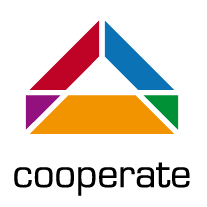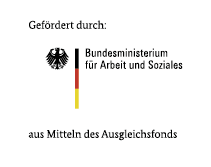Cooperate – New Paths of Cooperation for Diversity Teams in Software Development
Accessible Software Development
The IT industry offers, in particular in the field of software development, good job opportunities for people with visual impairment. To increase the chances of finding a job in the IT sector, the access to common development software and environments must be accessible.
Models are not accessible
Nowadays, both large and small software projects are often developed with the means of modeling languages by a team. The models of a language are usually expressed by diagrams. The most widely used language is the Unified Modeling Language (UML), which is available since 2000 and was published in 2 parts as a standard of the International Organization for Standardization (ISO): ISO/IEC 19505-1: 2012 & ISO/IEC 19505-2: 2012. Due to its strong visual components, the UML is a major barrier for people with low vision or blindness. Existing textual representations often cover only a small part of the modeling languages. Moreover, additional information about graphical layout is included and editors provide no way to focus on the content only in order to obtain an overview.
Cooperation tools are not mature
Seamless cooperation is a special challenge for the development of an accessible environment for Diversity Teams. Cooperation tools must update representations correctly and immediately between team members. The meaning and structure need to be consistent both in graphical and textual representations. Tools should support users in the creation of models actively with tips and auto-completion on the one hand and passively with an appropriate output of error messages on the other hand. Currently, there is no integrated solution with these characteristics.
Aim of the project
The lack of accessible models in software development complicates the cooperation in so-called Diversity Teams which are teams that consist of people with and without visual impairment. The goal of Cooperate is to develop a cooperation tool for Diversity Teams. Our target audience are developers of IT systems, software enigneers and instructors for IT professionals with visual impairment.
Our approach
During the development of the cooperation tool, existing technical working aids for graphical and textual architecture description languages are developed further to allow a barrier-free and seamless collaboration between people with and without visual impairment. In addition to the development of appropriate representations and editors for team members, training materials will be designed to facilitate working within a collaborative modeling environment.
Advantages
Each team member - whether with or without visual impairment - should be able to work in the display format that suits her or him best. Possible alternatives include a graphical and a textual notation together with the use of assistive technologies such as screen readers, magnification tools, braille displays or audio output. Best practices and guidelines complement the training materials and allow effective and efficient cooperation. This significantly lowers the barrier for cooperation in Diversity Teams and opens new fields of work for persons with visual impairment.
Sustainability
The use of the Eclipse framework ensures a wide availability of the cooperation tool. Other groups may incorporate the elaborated solutions in their own contexts for the design of modeling languages and tools. A connection to the commercial tool Enterprise Architect from Sparx Systems is planned as well in order to guarantee a low barrier to entry in industrial practice.



